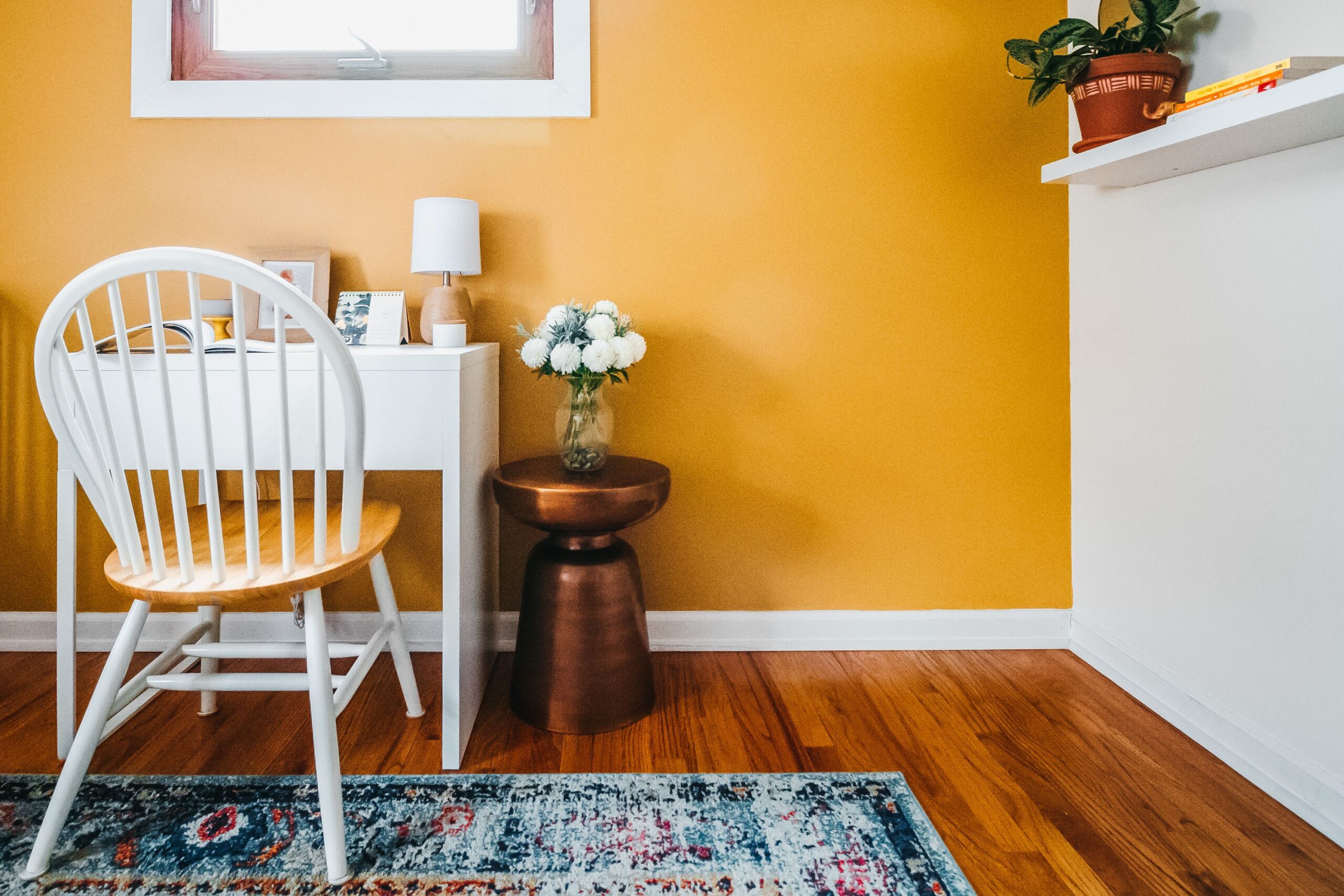So you’ve remodelled your house like a pro surgeon, repairing structural faults while also keeping each room’s distinct architectural flair. But there’s still something lacking… More than likely, it’s colour — the renovator’s special ingredient.

Did you know that crown moulding may alter the appearance of the ceiling by either raising or lowering it, depending on how it stands out against the walls? One of the most striking features of a contemporary home is colour. Colours may transform one room into a dynamic gathering place and another into a serene retreat for reading.
Colour is used today in open-plan houses, where kitchens, living rooms, and dining rooms are often all on the same plane, to help define interiors and create focal points in otherwise flat spaces. The secret to this is determining how to choose paint colours and where to place them.
How To Choose Your Paint Colors
1. Create a Color Scheme that Goes with Your Home’s Furniture
It’s worth listening to architectural colour consultant Bonnie Krims’ advice in a world where thousands of hues may be yours for just £25 per gallon.
“While there may be hundreds of paint chips at the store, there are only seven hues in the colour spectrum.” says Krims, The most common color after white is red, followed by orange, yellow, green, blue, indigo and violet (what Color Theory 101 students are usually taught to remember using the mnemonic device “Roy G. Biv”).. “I suggest eliminating a few before you even go to the shop.”
2. Choose the Finish for an Attractive Visual Effect
Once you’ve decided on your colours, think about the finish you’ll be using. Although today’s flat paints have improved stain resistance, conventional wisdom has long held that a satin (also known as eggshell) finish is best for walls because it is scrubbable and does not draw attention to flaws. It was recommended that semi-gloss and high-gloss finishes should be used only on mouldings or panels, where they could complement the curves of a profile or door.
Today, however, finishes are also used to create aesthetic effects on the entire wall. Paint one of the walls in a flat or satin finish and the adjacent wall in a semi-gloss finish, both in the same colour, and “when the light hits the walls, it creates a corduroy or velvet effect.” says Doty Horn.
A matte and sheen contrast may be created by painting the walls flat and the ceiling semi-gloss. (The higher the gloss, the higher your ceilings will feel.) Remember that a high gloss level draws more attention to the surface while also creating a sheen. Colour and glimmer can complement each other when used appropriately to accentuate your home’s best features.
Try a wipeable one coat wall paint like this one to get the best of satin and matte paints!
3. Choose the hue that best expresses the mood you want to create in the space.
Colour psychology is a minor addiction among paint specialists. Many paint experts advocate selecting a colour in part based on how a room is used and the atmosphere you wish to convey.
We suggest painting social areas (dining rooms, kitchens, family rooms, and living rooms) warm colours like daffodil-yellow, coral, or cranberry and providing private rooms (home offices, powder chambers, bedrooms) cooler colours such as sage-green, violet, or sky-blue is a popular strategy.
When it comes to emotional impact, however, one person’s welcome-home orange is another person’s signal to scram.
According to a study published in the Hong Kong Journal of Pediatrics, yellow may help the brain function more efficiently, so it might be worth trying in places where homework is carried out; but avoid using it in bedrooms, where the objective is generally to relax. Instead, look into soothing hues for bedroom design to aid you to sleep better.



